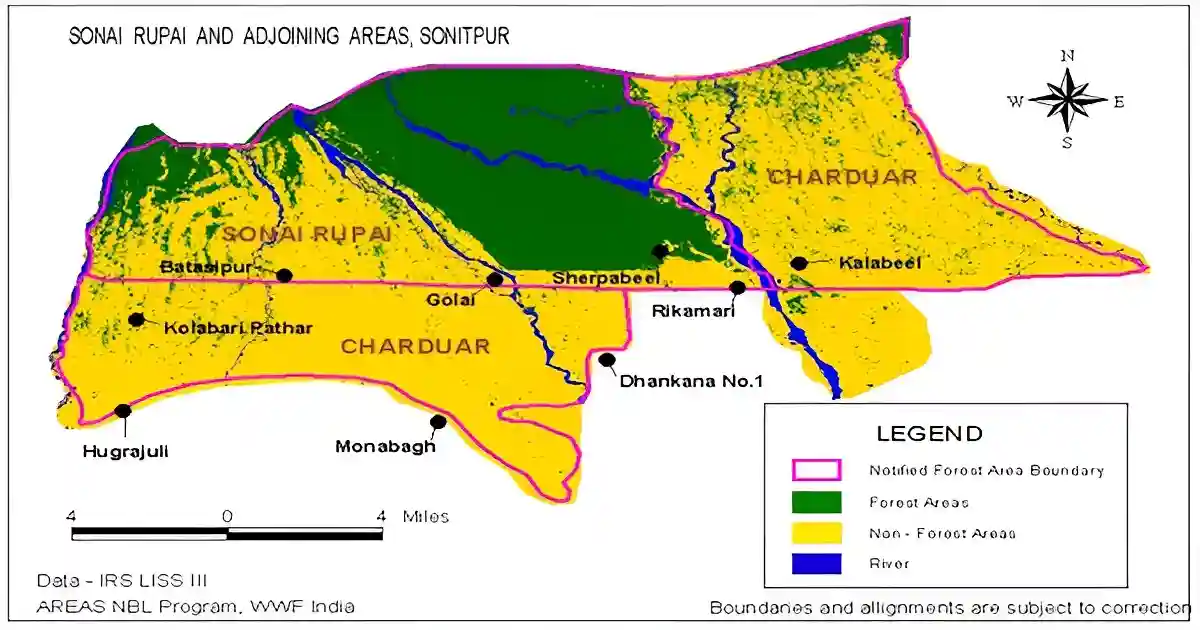ForumIAS announcing GS Foundation Program for UPSC CSE 2025-26 from 27th May. Click Here for more information.
Source-This post on Sonai Rupai Wildlife Sanctuary is based on the article “Polling stations constructed in wildlife sanctuary: NGT seeks Assam govt’s reply” published in “The Hindu” on 11th March 2024.
Why in the News?
The National Green Tribunal (NGT) has directed the Chief Secretary of Assam to identify officials who permitted the construction of polling stations, schools, and other structures within a wildlife sanctuary and a reserve forest, violating the Forest (Conservation) Act of 1980.
About Sonai Rupai Wildlife Sanctuary

| Aspect | Details |
| Location | 1. It is a protected area located in the Indian state of Assam. 2. It is situated in the foothills of the Eastern Himalayas. 3. It is known as the “Jewel of Assam”. |
| Neighbouring protected areas | It is bordered by the Pachnoi River to the west, Jia Gabharu to the east, the Doimara Reserve Forest in Arunachal Pradesh to the north, and the revenue village and Charduar Reserve Forest of Sonitpur to the south. |
| Status | It was declared a wildlife sanctuary in 1998. |
| River flowing through | There are four perennial rivers that flow through the sanctuary: Dolsiri, Gabharu, Gelgeli, and Belsiri. During the rainy season, several wetlands known as “bheels” can also been seen. |
| Flora | 1. The forests type in the sanctuary comprises tropical evergreen, semi-evergreen and moist deciduous forests. 2. Hollang, Mekai, Dhuno, Udiyam, Nahar, Samkothal, Bheer, Hollock, Nahor are found in the sanctuary. |
| Fauna | 1. The sanctuary is primarily known for its Elephant and Indian bison populations. It hosts a variety of other animals including deer, the one-horned rhinoceros, leopards, tigers, and some rare species of cats. 2. The avian life in the sanctuary features endangered species such as the White Winged Wood Duck, along with commonly seen birds like woodpeckers, hill mynas, Indian rollers, nightjars, horned owls, and more. |
UPSC Syllabus: Environment



